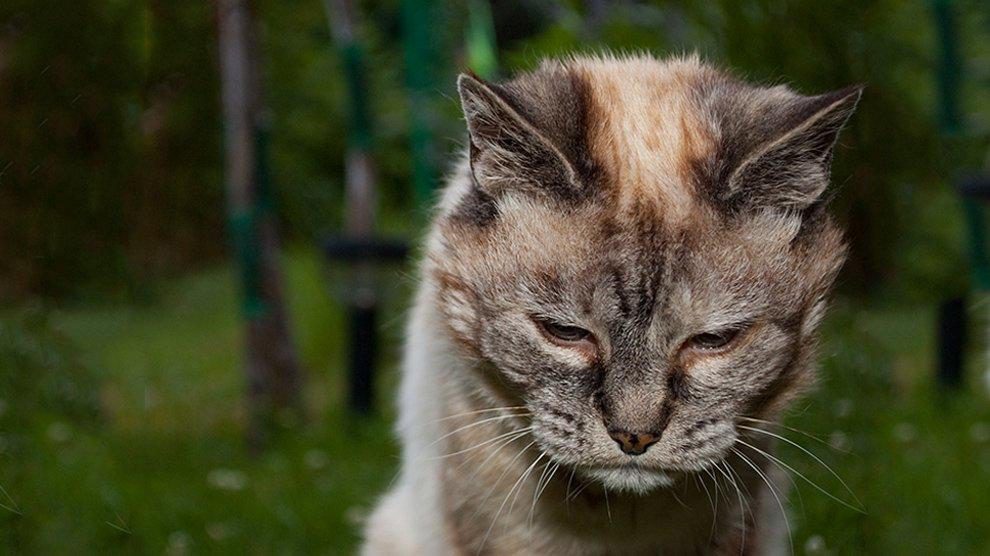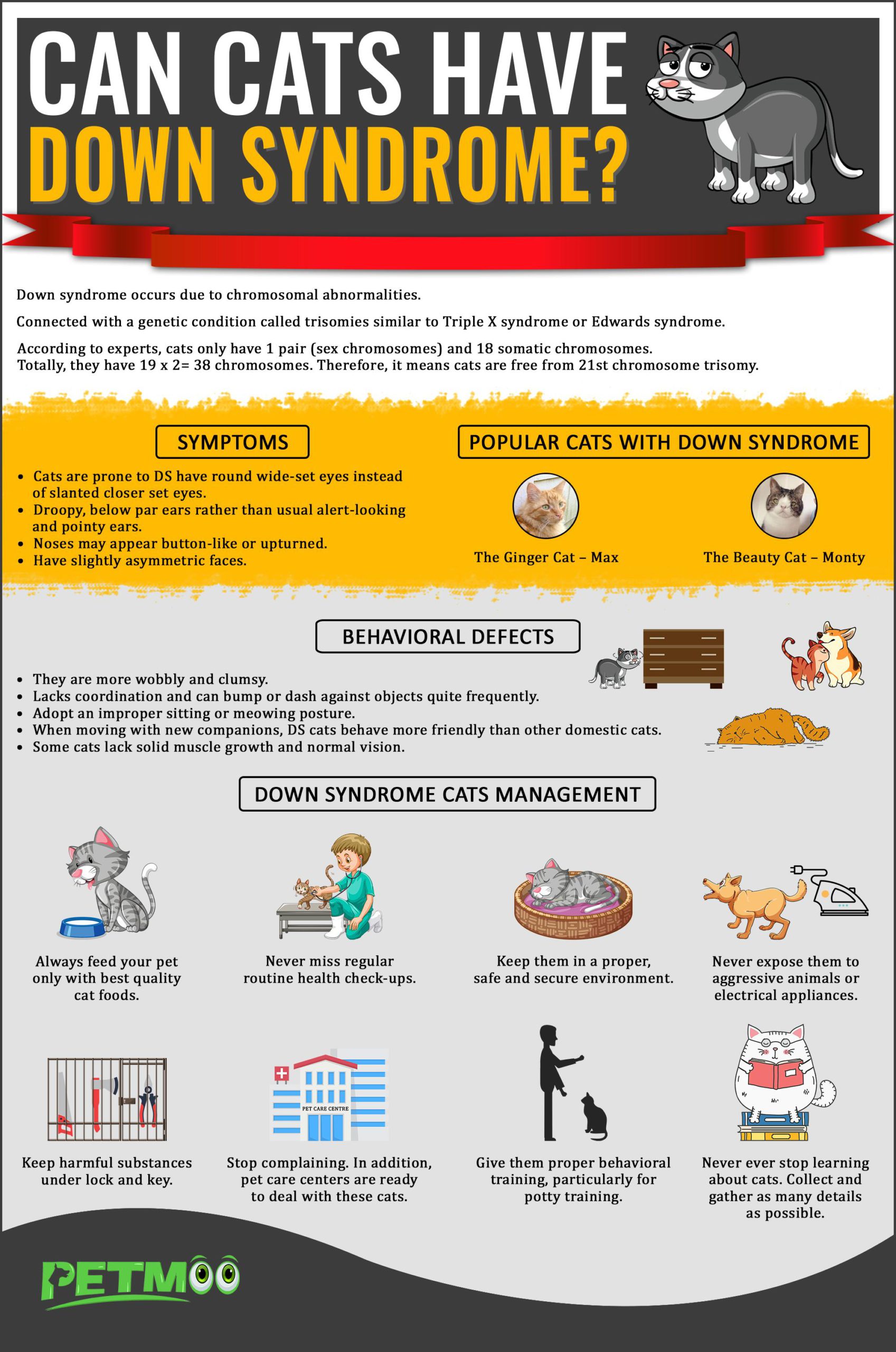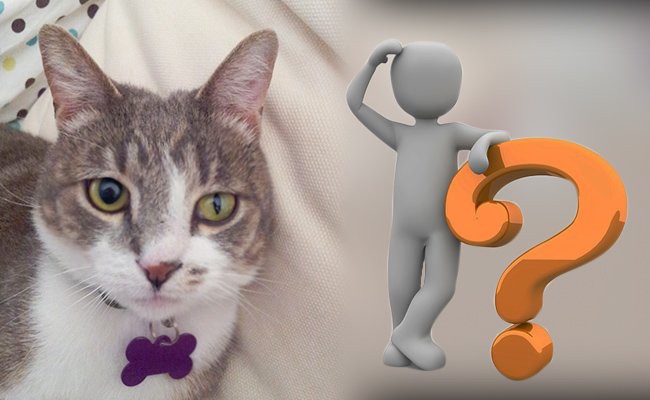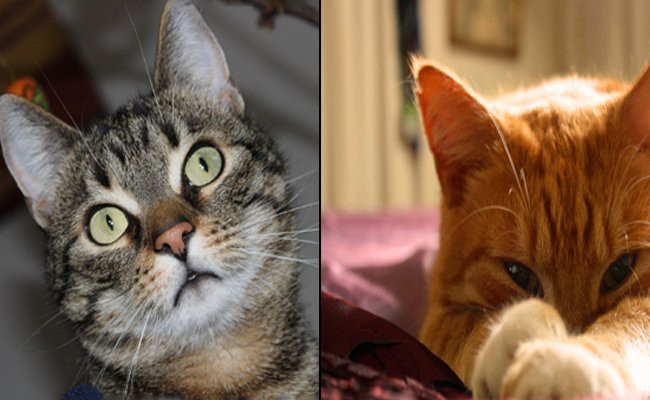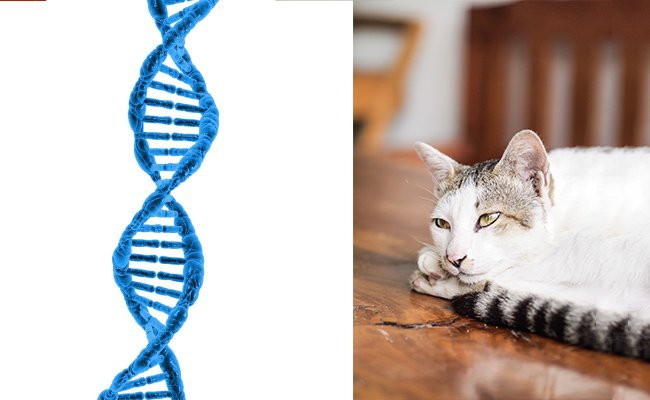- Cats With Down Syndrome Video And Infographic
- Can Cats Have Down Syndrome?
- Popular Cats With Down Syndrome
- Factors That Determine Down Syndrome In Cats
- Specific Genetic Disorders That Are Similar To Down Syndrome
- Simple And Effective Tips To Care For Cats
- Genetic Disorder And DNA Testing
- What Is Down Syndrome (DS) In Humans?
- Tips - Cats With Down Syndrome
Cat Pregnancy Calculator And Timeline
There are a countless number of unknown organisms roaming the earth that still require proper documentation and study.
The occurrence of DS is one that is still being researched to this day, so although researchers don’t have all the answers there are still plans and steps you can take to make sure your cat has the best quality of life.
Cats with FDS also have been making a huge splash on social media and are eliciting a divided response from the public due to questions on their quality of life.
So, let’s dig further and find answers to many questions regarding cats with DS? Can cats really have DS?
Can Cats Have Down Syndrome?
Down syndrome (DS) occurs due to chromosomal abnormalities. This condition is connected with a genetic condition called trisomies which are similar to Triple X syndrome or Edwards syndrome.
According to experts, cats only have 1 pair (sex chromosomes) and 18 somatic chromosomes. In total, they have 38 chromosomes, meaning cats are free from 21st chromosome trisomy.
Cats with Down syndrome symptoms
- Wide-set eyes instead of slanted closer set eyes
- Droopy, below par ears rather than usual alert-looking and pointy ears
- Noses may appear button-like or upturned
- May have slightly asymmetric faces
Down syndrome cats – Behavioural defects
- Wobbly when walking or running
- Lack coordination and can bump or dash against objects quite frequently
- Adopt improper sitting or meowing posture
- Behavior is more friendly than other domestic cats when presented with new companions
Popular Cats With Down Syndrome
Cats Diagnosed With Feline Down Syndrome (FDS):
Max and Monty were two cats brought up by different owners but were both diagnosed with something similar to Feline Down syndrome.
The Ginger Cat – Max
When Max, the cute ginger cat turned nine, he was affected by FDS. At times, he walked right into objects such as glass windows. Glen, Max’s owner, was upset over his pet’s condition and pondered over his inability to help Max.
Treatment
Dr. Arthur Frauenfelder assessed Max and confirmed that he was indeed suffering from FDS. However, Dr. Arthur’s report suggested that Max’s condition wasn’t serious.
The doctor recommended decreasing additive-enriched food and providing Max with enough vitamins that would boost his development and keep him healthy.
The Beauty Cat – Monty
Raised by Danish partners Bjorn and Klein, Monty was quite different from the other pets.
One of the more exasperating differences was that Monty peed in his sleep. In general, older cats may suffer from neuron loss which in turn may damage their ability to hold urine.
Monty is one of the much loved social media felines and has more than 3, 00,000 Facebook followers.
Factors That Determine Down Syndrome In Cats
1. Cats and humans differ in terms of biology
The basic structure of a human is completely different from that of an animal. Humans have 23 pairs of chromosomes while cats only have 19 chromosome pairs.
Notably, humans with DS have an additional chromosome 21, which is not possible in felines.
2. Behavioral differences do not necessarily translate to having DS
Owners who have cats supposedly affected by Down syndrome complain regularly about lethargy or other, single traits that can cause an owner to worry about their animal’s health and wellbeing.
On the other hand, cats suffering from odd behaviors are not always diagnosed with FDS. Dysfunctional behavior can happen as a result of an ailment or an environmental factor that is forcing your cat to behave oddly.
3. A veterinary investigation will reveal the truth
It’s always safe to check with your vet if your feline is showing a substantial difference in behavior, diet, or sleep patterns. However, cats can be victims of improper diagnosis.
Your vet may or may not have considered the genetic history of the cat. Cat breeds have a variety of different physical features, which can cause genetic blending of traits in your cat.
A cat with an asymmetrical face may not have FDS, but it may be a trait passed down from its mother’s breed.
There is also ‘Klinefelter syndrome,’ something that many cat owners aren’t familiar with. This condition can cause physical changes in your feline.
Vets should be careful in declaring their final diagnosis, making sure to investigate all avenues before providing treatment.
4. Inbreeding can also cause defects
When two animals with a similar genetic makeup mate, their offspring may suffer from defective genes. Correspondingly, the marriage between members of the same family increases the risk of contracting recessive diseases.
The risks of contracting genetic disorders are less than 50% when animals, including humans, mate outside their direct ancestry.
Specific Genetic Disorders That Are Similar To Down Syndrome
Cats can suffer from a range of ancestral defects that are difficult to detect. A vet would need to examine each of the symptoms of a cat in detail in order to come up with a proper diagnosis.
Below is a list of some of the genetic disorders often wrongly identified as Down syndrome:
1. Feline Dysautonomia
One of the lesser-known neurological disorders also called Key-Gaskell syndrome, Feline dysautonomia is largely seen amongst cats. In this disorder, the nervous system of the animal is either parasympathetic or sympathetic.
♦ How does feline dysautonomia works?
The nerve cells in the cat automatically degenerate, causing an autonomic nervous system failure. Britain is believed to be the birthplace of this disorder, due to most of the cases are reported in this country.
♦ Symptoms of feline dysautonomia
- Cats display very poor to low motor skills, similar to those affected by FDS.
- They may fall incessantly and will fail to move in the right way.
- Other possible signs include physical deformities, tear secretion problems, constipation, and diarrhea.
A certified vet should be consulted to know more about this disorder.
2. Distal Polyneuropathy
This condition mostly strikes Birman cats born out of the same family. Researchers have attributed the cause of this disease to be the presence of defective genes. As per medical reports, distal polyneuropathy occurs in cats as young as 2 to 2.5 months.
Most of the time, the owner may mistake this symptom as FDS, as the cat with this disorder may find it difficult to stand and wobbles when standing still.
♦ How does distal polyneuropathy works?
Felines affected with this disorder have insufficient blood levels. These cats are also susceptible to pelvic limb ataxia. Finally, there are no known cures for this disorder and the only option is to perform a DNA test to confirm a diagnosis. Breeders must remain alert before choosing a cat.
3. Klinefelther Syndrome
Vets have agreed that this syndrome is mostly present amongst cats having a tortoiseshell pattern. In addition, tricolor cats are usually not affected by this disorder.
♦ How does Klinefelter syndrome work?
These cats have XXY chromosomes. Normally, female cats and male cats have XX chromosomes and XY genes respectively. Similar to FDS, they have additional chromosomes when diagnosed.
Male cats suffering from Klinefelter syndrome will find it difficult to mate. Klinefelter syndrome cat owners are still able to neuter or spay their pets.
3. Cerebellar Hypoplasia
Another factor of cats with FDS, other than physical and behavioral irregularities, include cognitive problems. Mother cats that have Feline Parvovirus, also known as FPV, are at high risk of producing kittens with cerebellar hypoplasia.
Cerebellar Hypoplasia affects the cat’s balancing and walking abilities.
♦ How are cats affected by cerebellar hypoplasia?
As the name suggests, this disorder affects feline’s cerebellum. The cerebellum is the section in the brain that deals with maneuvering and coordination, along with fine motor skills.
Cats with cerebellum hypoplasia are described as “drunkards” due to the swaying way that they walk. They have little control over their movement and end up dashing against objects.
♦ Caution
Consult a vet or specialist first before attempting administration of medication or Cat owners must avoid administering Feline Parvovirus vaccines.
Without consulting the vet, one should not postpone any major decisions. Another suitable option is spaying your cat.
Simple And Effective Tips To Care For Cats
When you learn that your cat is suffering from a condition like Feline Down Syndrome (FDS), please do not let the diagnosis limit the love and care you give your animal.
If your vet has confirmed that your cat is affected by FDS or any other cognitive disabilities, take a note of these cat care tips:
- Diet management – Always feed your pet the best quality cat foods and ensure that he or she has the best quality of life.
- Never miss regular routine check-ups – Take him or her to an expert vet for regular check-ups and for an official diagnosis.
Your vet can advise and prescribe suitable solutions and preparations in order to address your pet’s condition.
A regular health check-up will not only help your cat but also make you feel safe about your pet’s health. - Be patient and never lose hope – If your cats are diagnosed with FDS, maintain them in a proper, safe, and secure environment.
Never expose them to aggressive animals or electrical appliances. Also, keep harmful substances under lock and key. - Stay focused – Understanding that your pet suffers from FDS can be difficult, but it should not be something that affects your love for your pet.
Vets can offer advice as to how to deal with an animal with a cognitive disorder and care centers are ready to deal with these cats and their symptoms.
Without a doubt, the onus is completely on the owner to show the much-needed affection and care. - Consult your vet – Remember, there’s no harm in asking for a second opinion. On the other hand, some consultation episodes may need your pet to undergo tests and checkups. After a successful diagnosis, the consulted vet may suggest better medicines and behavioral training, particularly for potty training.
- Research and keep reading – Never ever stop learning about cats. Collect and gather as many details as possible in order to better understand what they are experiencing and how to help.
Research and learn more about simple and effective ways to cure feline ailments, their ancestry, and their body anatomy.
It may be helpful to look up articles or blogs on already diagnosed cases of FDS and check whether those descriptions resemble the signs shown by your pet.
Genetic Disorder And DNA Testing
Inherited genetic conditions amongst cats can be managed as long as the condition is not complicated.
In an experiment conducted by scientists, there was some success in controlling PKD (polycystic kidney disease) in Persian cats.
The success of this experiment was largely attributed to the presence of just one gene for correction.
Nowadays, many cat breeders send their pets for DNA testing and attempt to prevent cats with errant genes from passing them on and to confirm diagnoses of felines with cognitive disabilities.
Overall, DNA testing helps with the discovery of genetic issues that may cause FDS.
What Is Down Syndrome (DS) In Humans?
DS or Down syndrome is a unique genetic disorder caused by the presence of a full extra chromosome in a 21st pair, which can be referred to as the “Trisomy twenty-one.”
This difference in chromosome number from the normal 23 pairs of chromosomes enables people with DS to have abnormal physical traits, like large tongues, small chins, big outer ears, a short neck, and slanted eyes.
Abnormalities that occur due to DS
- Improper or stunted growth
- Poor muscle tone
- Mental impairment- The average DS person exhibit a low IQ of less than fifty
- Slow growth rate
- Infertility issues
- Gastrointestinal problems
- Heart diseases
- Impaired vision
The additional chromosomes can also have other risks attached to them and symptoms can be different from one person to another
Taking all these things into perspective, do you really think cats can have DS?
Technically speaking, cats are free from what humans know as DS but can exhibit other cognitive issues that can present as something similar that comes with the same risk factors.
Only further research can establish the real cause of possible Down Syndrome in cats.
Tips - Cats With Down Syndrome
- Kittens with FDS require a specialized set of care compared to normal cats.
- The most common mistake people generally make is comparing “Human Down Syndrome” and “Cat Down Syndrome.” Avoid comparison, as both are different although they share the common name Down Syndrome.
- At the very least, shower your cat with unconditional love because only care and affection can help him recover fast.
- Feed them more natural foods or a multivitamin diet.
- Accept the reality that your cat is suffering from Down Syndrome. Never lose hope and continue your positive approach.

